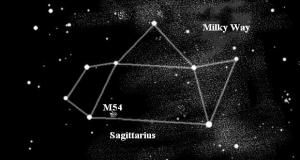Rain Check
All right, I'll admit it. Sky gazing during this year's monsoon hasn't been all that it might have been. The rain has forced me to try Plan B for astronomy (the Internet) much more than normal. There are lots of sites on the Internet devoted to Astronomy. I'll mention a few of the ones I have found useful or fun.Most people want to know where to start. I suggest that you go two sites with many links to other sites. From these sites you can skip to almost any topic which interests you. AstroWeb attempts to make daily check links for accuracy and availability. This is very handy since many sites started with good intentions lie dormant. I also like the links maintained by Yahoo! which is a commercial search service. Many of the sites I visit most frequently can be found here.The two major astronomy magazines, Sky and Telescope and Astronomy frequently update their sites. Unexpected sky events like supernovae or newly discovered comets are listed very soon after they are discovered. If you are looking for a definitive source of current information, Harvard University maintains the Astronomical Headlines as a service to the IAU (International Astronomical Union).If you are interested in visiting some of our major observatories, or would like to see what they are currently doing, they maintain web sites. Two I have accessed recently are Keck Observatory and Kitt Peak.Perhaps the very best multipurpose site is NASA. Its home page will take you to many exciting links. It provides pictures from just about all the space missions, interactive sites and information about upcoming space explorations. The NASA Space Sciences Photo Gallery(NSSDC) is a wonderful source for spectacular space photos.Two sites I have used repeatedly allow you access to pictures and maps created by the Hubble Space Telescope. For most people who would like to look at pre-selected spectacular pictures, I would suggest the Space Sciences Institute. If you want a specific area of the sky, and you know the right ascension and declination of that area, you can request the Digitized Sky Survey to search the Hubble's archives for an image. Over time the Hubble telescope has photographed most of the sky so you stand a very good chance of getting exactly what you need.Several sites allow you to build your knowledge of astronomy. Nine Planets as its name suggests is dedicated to the solar system. It has planetary and space shot photos galore. The Solar System Simulator lets you view planets as they would appear now or some other time from Earth or elsewhere in the solar system. For example you can see if the red spot is visible on Jupiter from Ganymede right now. Just about every formula and astronomical definition is available in the Treasure Trove. This sites is a cross between an encyclopedia and a dictionary for astronomical terms.The planets are beginning to make their appearance in the evening sky. By the middle of August Jupiter will be shining more brightly than any star in the southeast. Jupiter always makes a fine target for viewing. Use a telescope to look for the storm bands that bracket Jupiter's equator. They appear as brownish stripes against Jupiter's yellowish-white body. Can you see any markings on the surface? The most famous marking is the Great red Spot. Try to find the Galilean moons of Jupiter (Ganymede, Callisto, Io and Europa). These moon's are bright enough so they would be easily visible to the unaided eye except they are lost in Jupiter's glare.Saturn rises about an hour and a half after Jupiter. Saturn's rings wax and wane as the line of sight between Earth and Saturn changes. Sometimes the rings disappear as we view the rings edge on. Although the rings are tens of thousands of miles across, they are only a few miles wide, making them as hard to see a piece of paper edge on from miles away. Saturn has a number of moons which can be seen. Titan is by far the largest and brightest. It is so large that it has a very substantial atmosphere thought to be much like Earth's atmosphere prior to the production of oxygen by the earliest plants.In the far south, you can see a constellation that looks like a teapot, Sagittarius (the Archer). This constellation marks the southern most point that the planets traverse on their travels around the sky. The Sun is in this constellation at the start of Winter. Sagittarius also marks the center of our Milky Way galaxy. We now know that Sagittarius is the scene of an enormous but exceedingly slow collision. Our galaxy and a smaller galaxy are currently in the process of crashing into each other. The Milky Way is so large that its is shredding and absorbing the smaller galaxy. As stars are ripped away, the huge gravity of the Milky Way captures them. Some of the wreckage is visible. A cluster of stars (called M54) torn from this other galaxy is visible in small telescopes.
- Author:
- Leslie Coleman
- Entry Date:
- Apr 1, 1998
- Published Under:
- Leslie Coleman's Columns


